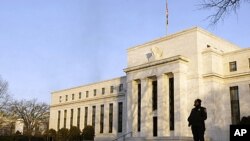The Federal Reserve in the United States acts as the country's central bank. It has a mandate to promote maximum employment, stable prices and moderate long-term interest rates.
The "Fed" has three main functions. They are to provide and maintain an effective payments system, supervise and regulate banking operations, and conduct monetary policy.
A Board of Governors in Washington is appointed by the president and approved by the senate, to administer reserve banks and branches in 12 districts around the country. The board represents the government. The banks and branches represent the private sector.
The most important tool the Fed has to conduct monetary policy is the buying and selling of U.S. government securities, which is often referred to as open market operations. A Federal Open Market Committee administers the sale and purchase of U.S. government securities on the open market to influence short-term interest rates and growth of money and credit.
Other tools that the Fed has it its disposal to influence the economy include adjustments to the discount rate and the reserve requirement, and acting as a lender. The discount rate is the interest rate the Federal Reserve Banks charge financial institutions for short-term loans of reserves.
The reserve requirement is the percentage of funds a bank must set aside and hold in reserve. If the Fed raises the reserve requirement, banks have less money to lend, which restrains the growth of the money supply. On the other hand, if the Fed lowers the reserve requirement, banks have more money to lend and the money supply increases. The Fed rarely changes the reserve requirement.
Finally, as a lender, the Fed offers discount rate loans to help banks meet short-term needs, a buffer to maintain steady reserve demand and supply.







